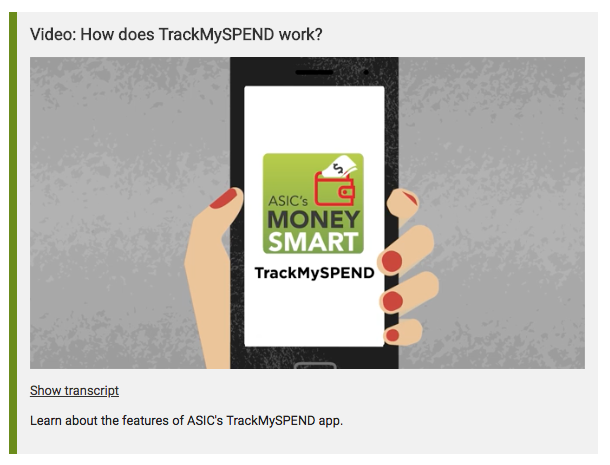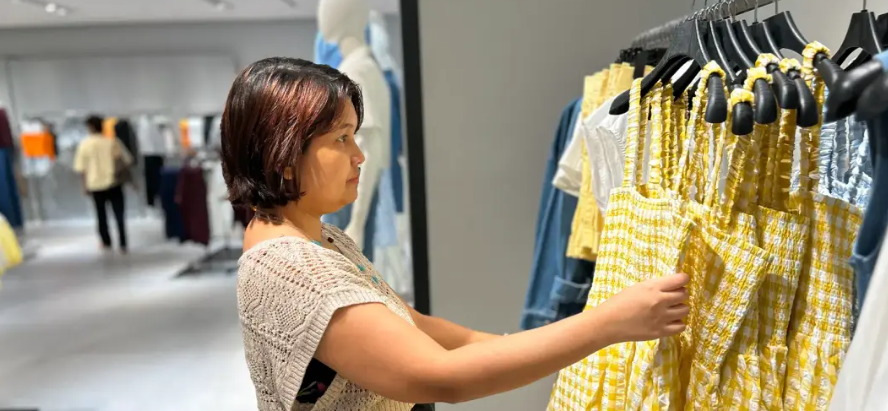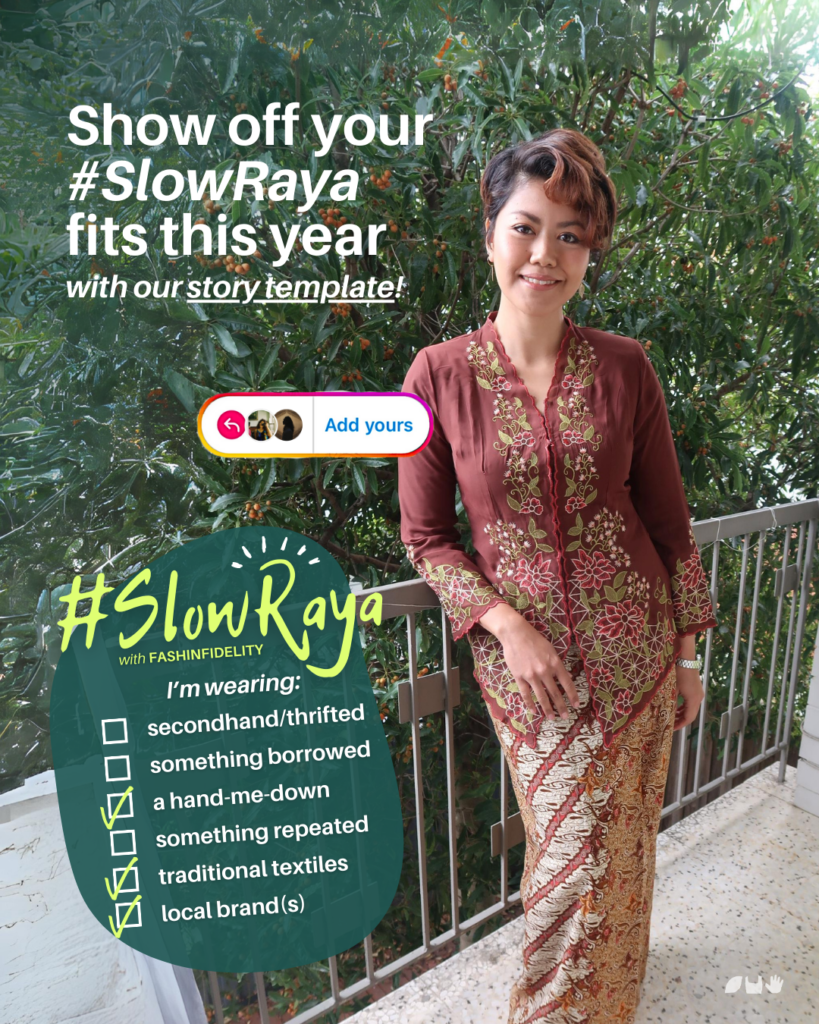This is a little story about the search for joy and happiness, that some of us can perhaps relate to…. and how I came to understand what fast fashion truly means.
2673 words; 13 minute read
Updated 7 Dec 2018
The fear of losing a bargain
There was a time when one would queue up in the early hours of the morning in front of Myer Bourke Street Mall in Melbourne or David Jones Pitt Street Mall in Sydney for the Boxing Day sales to be first in line to ‘grab the biggest bargain of the year.’ For those less interested in the shopping, the day provided the rush of experiencing a relentless stampede of shoppers.
Which is interesting, because, stampede is defined by Cambridge Dictionary as: “an occasion when many large animals or many people suddenly all move quickly and in an uncontrolled way, usually in the same direction at the same time, especially because of fear.”
What fear are these humans running from, exactly?
The perceived fear that you’re going to ‘miss out’ on a massive discount, to put it simply.
Fair enough, because who doesn’t love a bargain? Sure, there are things worth waiting for – for example, a designer dress that you’ve been eyeing for your sister’s wedding, a new-beaute TV and surround-sound system, a really nice duvet set, and well-tailored business shirts for work.
But joining the throngs of strangers on this occasion, some with purpose, yes, but most with none – likely with the intention to buy clothes** (see graph below) that was not on a particular ‘shopping list’ – is a bit like going to the casino to see if you’ll strike some luck without having done any of the homework, just because you got some cash to burn this month, and for the novelty of stepping into a nice, well-appointed building where you might get some free peanuts and Mentos at the bar.

Australians spent AU$20.4 billion on fashion in 2016. Source: ASIC’s MoneySmart.
Now ladies – some of you can relate to this, surely:
After spending a good hour or two in Myer, you go across the road to check out some of the earthly delights on offer outside of the big department stores – specifically at places like Cotton On, Dotti, Forever 21, Glassons, Topshop and H&M, because you know in your hearts of hearts there must be bargain bins ready to go overflowing with cheap stuff! Your inner voice does a conversation in your head and it says “I’ll able to score a top for less than $5 at Cotton On!”
It was so fun looking through all the range of fashion on offer, rack upon racks of them, and because you didn’t have to get to anywhere, the day was solely meant for finding something really cool to add to your wardrobe. You found some new sunnies, several tops, a couple of dresses and skirts, a pair of so-in-right-now shorts, and accessories that were super affordable. They were fashionable items that you have seen other people and celebrities wear. You go home from that day’s shopping escapade feeling utterly content, and cool down from the adrenaline rush of the the city’s sights and sounds, before realising you’re emotionally quite exhausted at this point – you know, all those people today! Which is okay though, because all that hunting down a great bargain has paid off as you look at the many carry bags you’ve plopped on the dining table. You can’t wait to lay your purchases out on your bed, for the inevitable ceremony that is taking the tags off.
After the rush
Later on, during the next few weeks, as you stroll past a few shops when you’re out grocery shopping or taking part in summer activities with your friends and family, you can’t help but walk into a store or two and browse around other bargain bins you can spot from the corner of your eye – at the chemist, fashion outlets, stationary shops, and shoe stores.
It’s at this time that the rush of finding clothes or cosmetics in a discounted bin, to snatch bargains for very cheap, have become unamusing and feels a bit like a chore. You can’t find anything that is worth your hard-earned money, plus, you’ve spent a bit on Christmas presents. You also begin to realise that you regret some of the items that you bought at the Boxing Day sales and you had better stop looking out for ‘bargains’ for the next month or two – you realise you had acquired some items that didn’t look that great on you, anyway, and you haven’t found the right occasion to wear them yet.
That joy of a feeling from all your shopping, and all the hype surrounding it, has now completely worn off and you’re ready to get back into the routine of life, as you were.
This goes on for six months until we get to the End of Financial Year sales, where a little voice in you whispers a thought that says, “…it wouldn’t hurt to do a bit of window shopping over the weekend.”
Yes, once upon a time, we look forward to the big sales and we get lucky on some stuff.

The joy of Christmas at Myer, Bourke Street Mall, Melbourne (Source: Inside Retail)
You and your overflowing wardrobe
But, as it turns out, you don’t have to go into town to do your shopping anymore. As the advent of e-commerce is taking a hold within our lives – specifically, in our living rooms, bedrooms, trains, and work lunches, the big rush you feel from snatching a big bargain at the end of the year seems to now happen on a more regular basis, as things are on sale – quite literally – everyday! This way we appease our inner, almost carnal satisfaction that comes from spending $7 here, and $20 there (which probably won’t affect the bank balance that particular week.)
So, you’re now the owner of a fabulous wardrobe! You have all kinds of pieces, from luxe loungewear to (lots of) flirty dresses to funky leggings to statement tees to oversized cardigans to a number of slightly weird high-waisted pants in bold print. They don’t all match a style aesthetic; they’re just a mixed bag of awesome pieces that all stand up to their individual selves.
Most days though, looking through your overflowing wardrobe, some with clothes with their swing tags still attached, you run into this problem of not having anything to wear. Wait, what? With all the fabulous clothes you have in your drawers?
As you grow older, and you earn a little bit money, you realise you can spend your money on things that you actually really enjoy, like going out to movies, subscribing to a monthly book club, dining at a nice restaurant with friends, and indulging in a really cool sound system (because, wine and cheese parties.) As a matter of fact, you can’t fit into some of these clothing items you treasure so much. You want to give them away but understand not everyone can pull off a crop top with a miniskirt, and if they did, you hark back to the times when you recognise the ‘look’ – it’s a little outdated now. Over the course of two seconds, a thought bubble entered your head that said, “what was I thinking?” You wouldn’t do that to your young niece. You look at the fabric and it just doesn’t look appealing. The quality is clearly lacking. No one would want this. Not even Vinnies.
Yeah, we’ve all been through this phase. (I sincerely hope?)
The only items that have stood the test of time are some of the classic items in mum’s wardrobe. The thick wool trenchcoat she has had for years. The blazer that always looks good on her, whatever she pairs it with! A knitted ribbed vest that was handed down by grandma. You start questioning, why can’t I find clothes like that anymore?
If you’ve been reading my blogposts, you know how this story unfolds.
It’s time we look at how we wear clothes now…. we need to consume fashion differently.

Online shopping is such a blessing! (Photo: David Lezcano via Unsplash.com)
The science of happiness
Science actually says that people do experience a momentary and fleeting ‘happiness’ when they make material purchases. But alas, the keyword here is ‘momentary.’
A quick search on the web of ‘what makes you happy?’ returned popular articles that all point to one thing: life experiences make us happy, not things.
Which is true, but here’s more: Products or material things can make us happy, but only if they are related to an experience. Makes sense, right?
A 2014 study published in the Journal of Consumer Psychology found that products that helped buyers create an experience – the so-called “experiential purchases” – were as good at providing happiness as life experiences. An object like a bicycle or a book can provide a lifetime of valuable experiences. The same researchers also found that people were happier if they spent on things that matched their personality; didn’t matter if was material or not. For example, an outgoing person would love to blow his cash at a pub, but a more introverted person is likely to be happier spending that kind of money on books.
In a recent TedX talk however, Harvard professor Robert Waldinger, the head of the longest study on happiness in history, states the secret to happiness, regardless of socioeconomic status, has been found to be connection with other people.
Interesting. So I guess you could say what really made you happy during those mall shopping sprees was the fact that you were spending time with your best friend, right? 😉

Spending time with my family makes me happy. L-R: Sarah, Ning, and me. (Photo: Brisbane, May 2018.)
My 20-something year-old self didn’t understand
Millennials (for the purpose of this post, that’s me, but I relate more to a subset generation called Xennials), or Generation Y, represent an estimated $2.45 trillion in spending power and have overtaken Baby Boomers as the largest, most influential group in terms of consuming and employment. (I’m not discounting men as a sub segment here either, because menswear is outpacing womenswear in growth, with males actually shopping more than females online.)
When I was in my twenties, I didn’t know that girls aged 18-24 in developing nations were (and still are) the ones who cut, sew and trim 80% of the world’s clothes, that inversely, people in the same age group were frantically buying in developed countries. Crazy, right?
We’ve entered a new era of #consumption (or, as you may recognise as ‘fashion’) where we can now ‘design’ styles inspired by the runway and hang garments in a shop rail in as quick as three weeks. So-called style trends followed, once we kept up with more carbon copy production and consumers started purchasing and wearing the same pieces. Throw in smaller production batches at dizzying rates, the average consumer is tricked into thinking affordable fashion will be gone forever if you don’t snatch it *now*. Harvard researchers have described this drives a sort of hunger… ‘a sense of tantalising exclusivity.’ We’ve created a monster, and millenials had given the monster its arms and legs.
Remember that stampede we imagined earlier? It’s pretty ugly, isn’t it?

Time to repent
Now that we’re a little wiser, it’s time we stand up to the lies we have been told: that somehow happiness can be purchased – often at a price that doesn’t reflect the effort, environmental impact, and materials that went in to produce the garment.
Don’t worry about the ‘trends.’ This is probably the number one advice I’d spruike on the streets today whenever I see young girls frequenting Forever 21. Why be a follower, when you can stand out on your own? It’s best to create your own magical style, I say!
And then I’d emphasise: Happiness can’t be bought, despite the messages we see every day claiming otherwise. (Think aggressive advertising and ‘testimonials’ you find so often on the web these days while browsing or using social media.)
No, my younger self didn’t understand any of this. But that’s normal. I guess if I were to impart wisdom on how I could have justified spending my hard-earned wages, it would be to do something like taking my family to a fun activity, or gifting a theatre/football membership package as a birthday present to myself, or investing in a good camera or laptop, or going to watch my favourite musician live with my closest mates.
So the story goes that I had repented for many years now, as I realised style trumps any trend in fashion, full stop. I haven’t bought new clothes since November 2016. I’m embracing my body and my personal style. I only buy intentionally, and serve a function.
Kids nowadays are smart!
Gen Zed kids seem to know all this. As I embarked on my business strategy this past year, I’ve had so many voices of support from young friends and family who seem to just…. ‘get it’.
The literature is universally agreeable on the fact that Gen Zeds are concerned about big companies and monopolies. They know we have big problems like global warming, international terrorism and resource scarcity that were left behind from previous generations. They’re more optimistic about the future as they use technology (augmented reality, virtual reality, artificial intelligence), more than ever, to solve problems. Yes, they’re more likely to build the foundations to tackle the challenges, create collective movements, and rally change – themselves. They don’t wait for change and innovation.
Gen Zeds are more careful about money than Millennials, for example, and are more risk-averse when it comes to things like drugs, alcohol and sex. They’re concerned about the environment, and more inclusive and accepting of diversity. They are totally disrupting education already, and the way teens and adults learn. They understand the need to live a lifestyle lighter than their parents, and care for their health and animals.


The lure of (Homogenous) Fast Fashion is still hard to resist among Millenials and Gen Zeds (Source: FashionNova.com)
What the future holds
Fast Fashion is certainly not dead – yet – as evidenced by the rise of Fashion Nova, the latest player in the e-retailing space and the profit books of Missguided, Boohoo, and ASOS.
The conundrum remains however: with more advanced e-commerce capabilities and personalised and direct marketing that keeps getting better everyday, will Gen Zeds put their money where their mouth is and wholeheartedly reject fast fashion? Will they favour homegrown, local labels that emphasises on ethical sourcing practices, capsule or evergreen collections, and responsible labour?
Only time will tell.


Yes, admittedly, we have a generational shift that’s coming along quite swimmingly with regards to consuming fashion, but actually – we all can start shifting our mind game now.
if you’re thinking of taking the plunge, follow my my top tips to curb your unnecessary shopping enthusiasm
- Stop ‘browsing’ for anything online or at the shops. – Stop buying new clothes, unless they’re a one-for-one replacement that serves a particular purpose. For example; a new pair of running shoes, a new work shirt to replace your old white one that doesn’t look presentable anymore.
- Swap an item in your wardrobe that you no longer feel joy out of wearing with a friend.
- Buy second-hand/pre-loved or vintage if you really feel the urge to have new pieces in your wardrobe.
- If you really want to buy new clothes, research brands that support Sustainable Fashion or support Slow Fashion principles. Invest in classic shapes, cuts and materials. Ask yourself if you really need the item, and will you wear it at least 30 times.
Some of the actions on this list may be difficult to do, but as the case with anything that’s difficult, the pay off is often beautiful. In this case, you are no longer part of the problem, but proudly part of the solution to a better future.
Have you come to the realisation that true happiness is not found in discounted bins, yet? I’d love for you to share your stories with me 🙂
Join us in our Slow Fashion movement with the hashtag #ConscientiousFashionista and #wardrobetruths on Instagram, and follow us at @fashinfidelity.
Tags:
#createyourtrend #styleoverfashion #liberation #freeyourself #fashion #fastfashion #slowfashion #ethicalfashion #responsiblefashion #sustainablefashion #intentionalpurchasing #fashioneducation #wardrobetruths #conscientiousfashionista #whomademyclothes #fashionisnolongertrendy
References:
- Jenny Awford, But is it really worth it, guys? Carnage at Boxing Day sales across the country as keen bargain hunters camp out in the rain to get their hands on the best deals (Daily Mail Australia, 25 December 2015)
- Report: Inside Australian Online Shopping, 2018 eCommerce Industry Paper (Australia Post, undated)
- Runjhun Noopur, What is Happiness? (Medium, 22 February 2017)
- Dinsa Sachan, Scientific Proof That Buying Things Can Actually Lead To Happiness 20 (Sometimes) (Fast Company, 6 July 2016)
- Mike Huynh, Study reveals whether material goods really make you happy (D’Marge, 26 July 2017)
- Joshue Becker, 9 Reasons Buying Stuff Will Never Make You Happy (Becoming Minimialist, undated)
- Kasra Ferdows, Michael A. Lewis, and Jose A.D. Machuca, Rapid-Fire Fulfillment (summary) (Harvard Business Review, November 2004)
- Aaron Orendorff, The State of the Ecommerce Fashion Industry: Statistics, Trends & Strategy (Shopify Plus, 16 March 2018)
- Monique Scotti, Gen Z: What Will be The Legacy They Leave Behind? (Global News Canada, 24 June 2018)
- Lee Miller and Wei Lu, Gen Zeds will surpass Millenials within a year (Chicago Tribute, 20 August 2018)
- Marcie Merriman, Report: What if the next big disruptor isn’t a what but a who? (Ernst & Young Global, undated)
- Fashion Nova Won the Internet and Is Transforming the Way Millennials Dress (i.e. the same way) (The Fashion Law, 14 March 2018)




